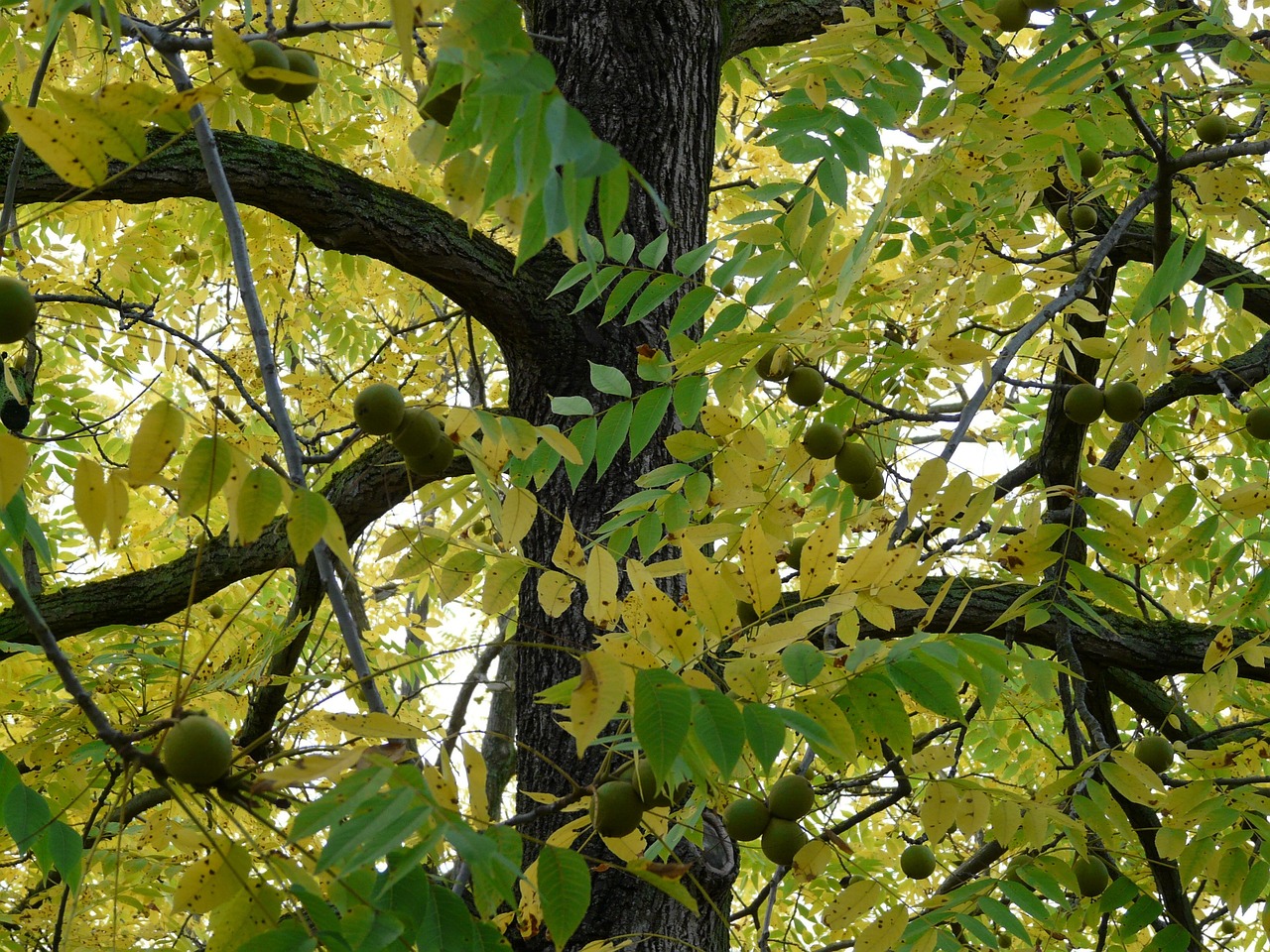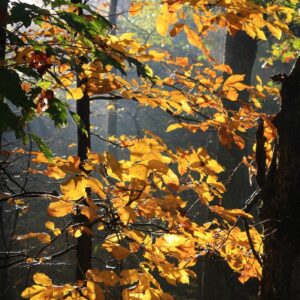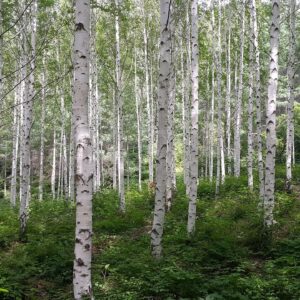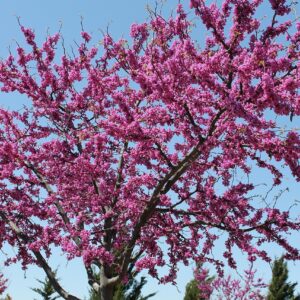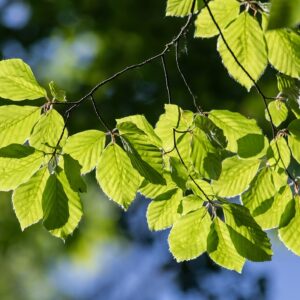The Eastern Black Walnut (Juglans nigra) is a large deciduous tree native to eastern North America. It’s highly regarded for its rich wood, edible nuts, and striking presence in the landscape. While it is an important tree both economically and ecologically, it’s also known for its unique chemical defense mechanism that can affect the growth of other plants nearby.
Here are some key features of the Eastern Black Walnut:
Size and Growth: Height: Typically grows 60 to 75 feet tall, but it can reach up to 100 feet in ideal conditions. Spread: The canopy can spread 40 to 50 feet wide, giving it a large, rounded or spreading crown. Growth Rate: It grows relatively quickly compared to other hardwood trees, especially in rich, well-drained soils.
Leaves: The leaves of the Eastern Black Walnut are large and pinnately compound, meaning they have several leaflets arranged on either side of a central stem. The leaflets are oval-shaped and dark green, with a smooth margin. In the fall, the leaves turn a yellow to yellow-brown color before dropping. The leaves themselves can grow up to 2 feet long and consist of 15 to 23 leaflets.
Bark: The bark of the Eastern Black Walnut is deeply furrowed and has a dark, ridged texture. It’s often described as having a “checkered” appearance due to the deep grooves that form in older trees. This distinctive bark adds character to the tree, particularly in the winter when its canopy is bare.
Flowers: Black Walnut trees are monoecious, meaning they have both male and female reproductive parts on the same tree, but in separate flowers. The male flowers are long, yellowish-green catkins that dangle from the tree in early spring. The female flowers are small, often appearing in clusters at the tips of twigs and developing into the walnut fruit after pollination.
Nuts: The tree produces large, round, green fruit that contains the edible walnut inside. These nuts ripen in late summer or fall, turning brown when mature. The outer husk is thick and can stain hands and clothes with its dark pigment. Once the husk is removed, the walnut inside is a rich, flavorful nut that is highly prized for culinary uses. Walnuts are known for their rich, buttery flavor and are commonly used in baking, cooking, or eaten raw.
Habitat and Growing Conditions: The Eastern Black Walnut prefers deep, fertile, well-drained soils and thrives in full sun. It’s often found in bottomlands, floodplains, or rich hardwood forests. It’s adaptable to a range of conditions but is sensitive to poor drainage and standing water. This tree is native to much of the eastern and central United States, from southern Maine and New York to as far west as eastern Kansas and Oklahoma.
Wood: The wood of the Eastern Black Walnut is highly valued for its strength, fine grain, and rich color. It is used in high-end furniture, cabinetry, gunstocks, and musical instruments. The wood has a dark brown hue with contrasting lighter streaks, making it one of the most sought-after hardwoods for fine woodworking.
Allelopathy (Chemical Defense): One notable characteristic of Black Walnut trees is the production of juglone, a chemical compound that is toxic to some other plants. Juglone is present in the leaves, nuts, bark, and roots of the tree. This chemical can inhibit the growth of many plants around the tree, particularly garden plants like tomatoes, peppers, and certain ornamental species. This property can make planting near a Black Walnut challenging for some gardeners.
Wildlife Value: The nuts are an important food source for many animals, including squirrels, deer, raccoons, and birds like woodpeckers and jays. Many species of wildlife depend on the nuts for sustenance, especially in the fall and winter. The tree also provides habitat and shelter for birds and other animals.
Maintenance and Care: The Eastern Black Walnut is relatively low-maintenance once established, but it can be a bit challenging to grow other plants underneath it due to the allelopathic effects. Pruning should be done in the late winter or early spring, before the tree starts actively growing. This helps prevent the tree from “bleeding” (losing sap) and can maintain its shape.
Potential Issues: Root and Soil Toxicity: The juglone produced by the tree can negatively affect nearby plants, which may struggle to grow or even die in its vicinity. It’s important to consider the tree’s allelopathic nature when planting nearby vegetation. Pests/Diseases: The Black Walnut can be susceptible to various pests and diseases, such as the walnut aphid, walnut caterpillar, and fungal diseases like walnut blight. Regular monitoring is helpful to ensure the tree’s health.
Uses: Edible Nuts: The walnuts are a popular food source, known for their flavor and versatility in cooking, baking, and snacks. Wood: The valuable timber is used for high-end wood products, including furniture, cabinetry, and decorative veneers. Shade Tree: Although the allelopathy may limit its use as a lawn tree, the Eastern Black Walnut is prized for its shade and aesthetic appeal in larger landscapes and woodlots.
The Eastern Black Walnut is a majestic, valuable tree that provides food, timber, and shelter for wildlife. However, it’s essential to be mindful of its allelopathic properties if you plan to plant other vegetation nearby. It’s a great choice for larger properties, woodlots, or areas where you can allow it to spread freely and benefit from its unique qualities.

